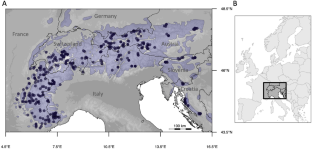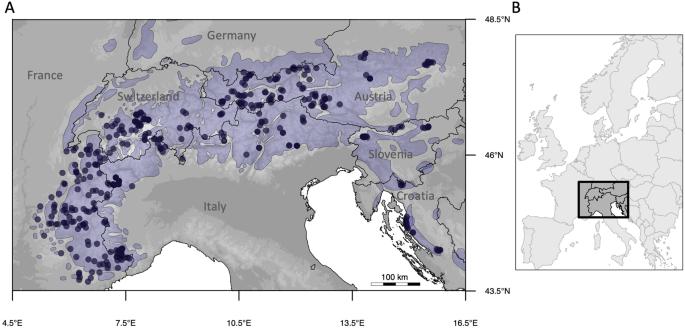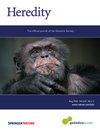预测高山蹄类动物适应性基因单元当前和未来的分布情况
IF 3.1
2区 生物学
Q2 ECOLOGY
引用次数: 0
摘要
据气候预测,到 21 世纪末,高山环境将发生重大变化。为了避免气候引起的适应不良和灭绝,许多动物种群要么需要迁移到更合适的栖息地,要么需要在原地适应新的条件。由于一个物种的种群会表现出与当地适应性相关的遗传变异,因此将这种变异纳入预测模型以帮助评估该物种在气候变化中的生存能力非常重要。在这里,我们评估了山地羚羊(Rupicapra rupicapra)的适应性遗传变异如何受到未来全球变暖的影响。基于使用 ddRAD 测序方法对 429 只羚羊进行的基因型-环境关联分析,我们确定了与欧洲阿尔卑斯山气候梯度相关的遗传变异。然后,我们划分了适应性遗传单元,并预测了这些适应性群体在未来的最佳分布。我们的研究结果表明,北麂存在对气候的局部适应,在地理位置遥远但气候相似的种群中也存在类似的遗传适应反应。此外,我们的结果还预测,未来的气候变化将大大改变北麂的适应性景观,并带来不同程度的适应不良风险。本文章由计算机程序翻译,如有差异,请以英文原文为准。


Projection of current and future distribution of adaptive genetic units in an alpine ungulate
Climate projections predict major changes in alpine environments by the end of the 21st century. To avoid climate-induced maladaptation and extinction, many animal populations will either need to move to more suitable habitats or adapt in situ to novel conditions. Since populations of a species exhibit genetic variation related to local adaptation, it is important to incorporate this variation into predictive models to help assess the ability of the species to survive climate change. Here, we evaluate how the adaptive genetic variation of a mountain ungulate—the Northern chamois (Rupicapra rupicapra)—could be impacted by future global warming. Based on genotype-environment association analyses of 429 chamois using a ddRAD sequencing approach, we identified genetic variation associated with climatic gradients across the European Alps. We then delineated adaptive genetic units and projected the optimal distribution of these adaptive groups in the future. Our results suggest the presence of local adaptation to climate in Northern chamois with similar genetic adaptive responses in geographically distant but climatically similar populations. Furthermore, our results predict that future climatic changes will modify the Northern chamois adaptive landscape considerably, with various degrees of maladaptation risk.
求助全文
通过发布文献求助,成功后即可免费获取论文全文。
去求助
来源期刊

Heredity
生物-进化生物学
CiteScore
7.50
自引率
2.60%
发文量
84
审稿时长
4-8 weeks
期刊介绍:
Heredity is the official journal of the Genetics Society. It covers a broad range of topics within the field of genetics and therefore papers must address conceptual or applied issues of interest to the journal''s wide readership
 求助内容:
求助内容: 应助结果提醒方式:
应助结果提醒方式:


